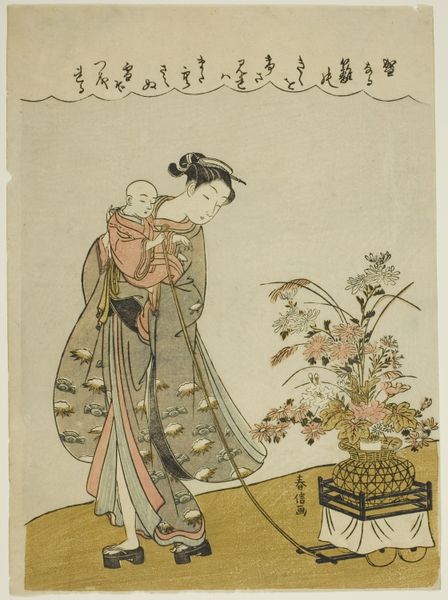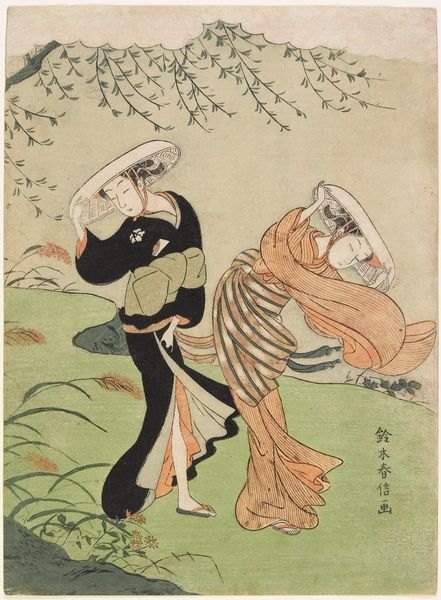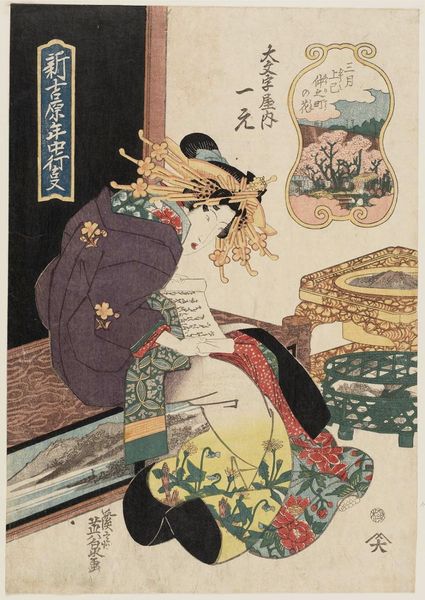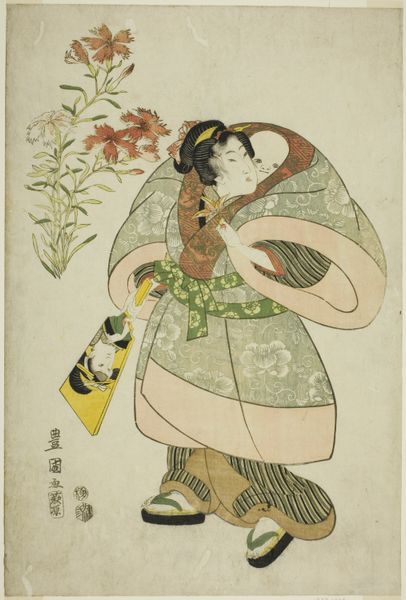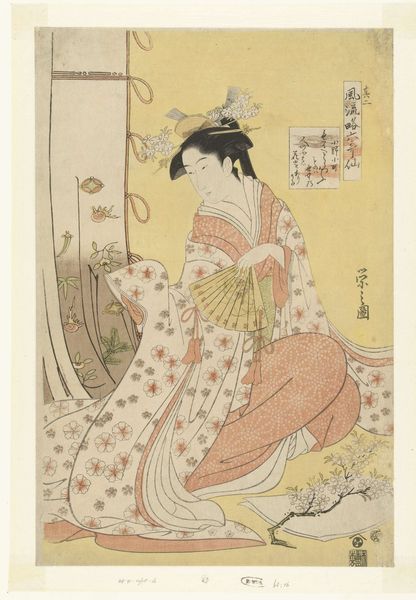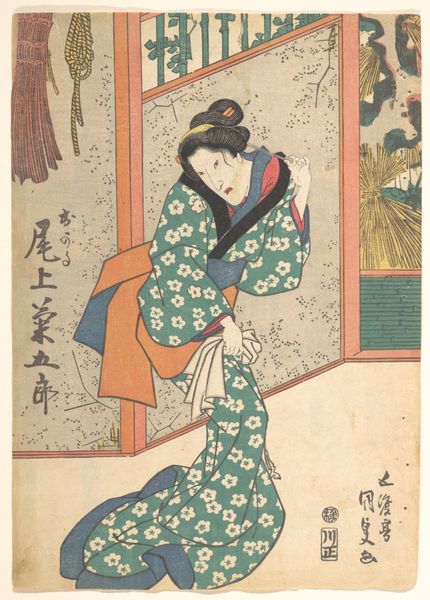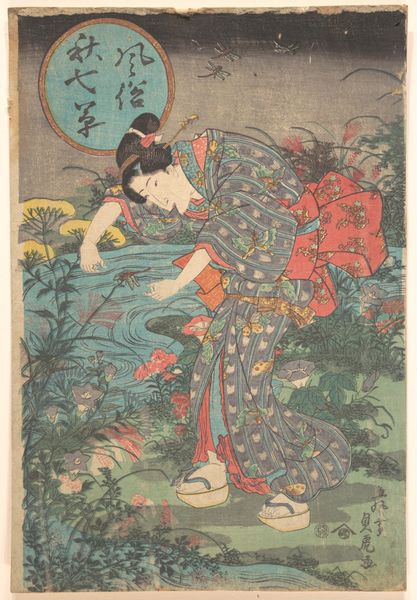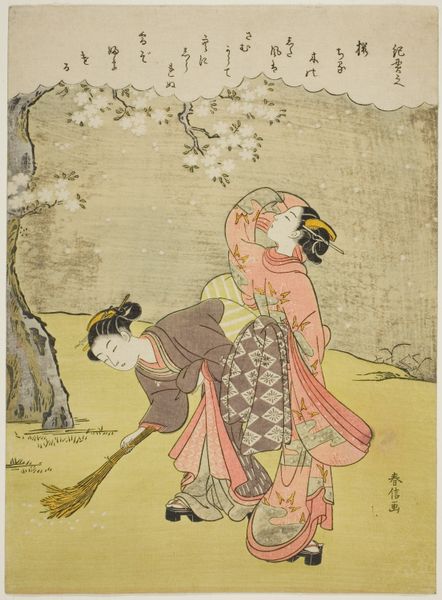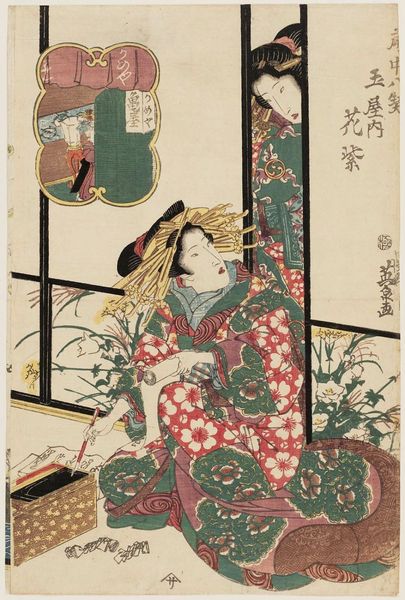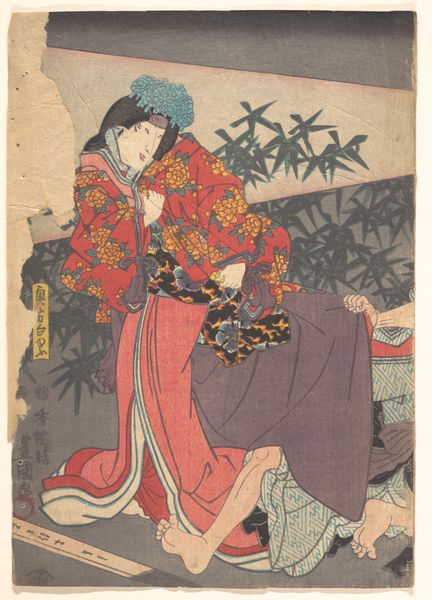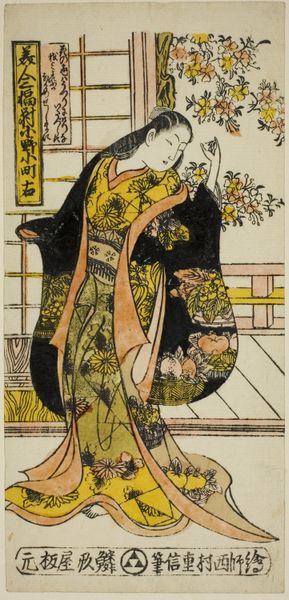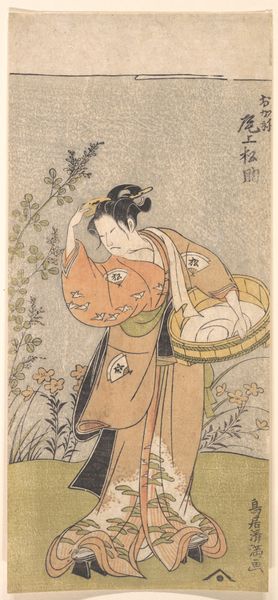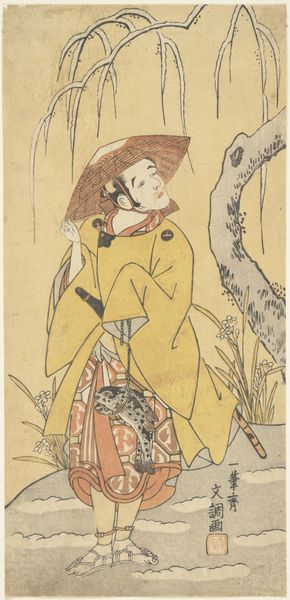
#
portrait
# print
#
asian-art
#
landscape
#
ukiyo-e
Dimensions: 35.6 × 25.7 cm (14 × 10 1/8 in.)
Copyright: Public Domain
Editor: Here we have Shunshosai Hokucho's "The Actor Nakamura Karoku I as Fujiya Azuma" created in 1827, a woodblock print now residing at the Art Institute of Chicago. The figure seems almost suspended within this yellow, floral field. What symbolic weight does the figure and his surroundings carry, given its time? Curator: Note the butterflies, both on the robe and flitting in the air. In Japanese art, butterflies often represent transformation, resurrection, and the soul. Given this is an actor in costume, could the butterflies reference the transformative power of theatre, where identity becomes fluid? Do you see how this relates to ukiyo-e’s broader themes of fleeting beauty? Editor: That makes a lot of sense. So the butterflies aren’t just decorative; they point to something deeper about identity and performance. Also, the landscape...it almost looks dreamlike. Curator: Indeed! And notice how the landscape itself isn't entirely realistic. The stylized mountains in the distance combined with the intense yellow of the field - they almost create a stage-like backdrop, framing the actor’s persona. The Actor as Fujiya Azuma might also serve as a cultural touchstone for its viewers. Editor: A cultural touchstone? How so? Curator: The print might be a way for people to collectively remember this character. The print is more than just art; it becomes a container for memories associated with his play or social importance during the Edo period, thus giving symbolic meaning that is anchored within history. Editor: It's fascinating how the image works on so many levels, as both art and as a cultural object loaded with meanings from theater and even the natural world. Curator: Yes, a beautiful reminder of the power of imagery in encapsulating culture and personal identity.
Comments
No comments
Be the first to comment and join the conversation on the ultimate creative platform.

